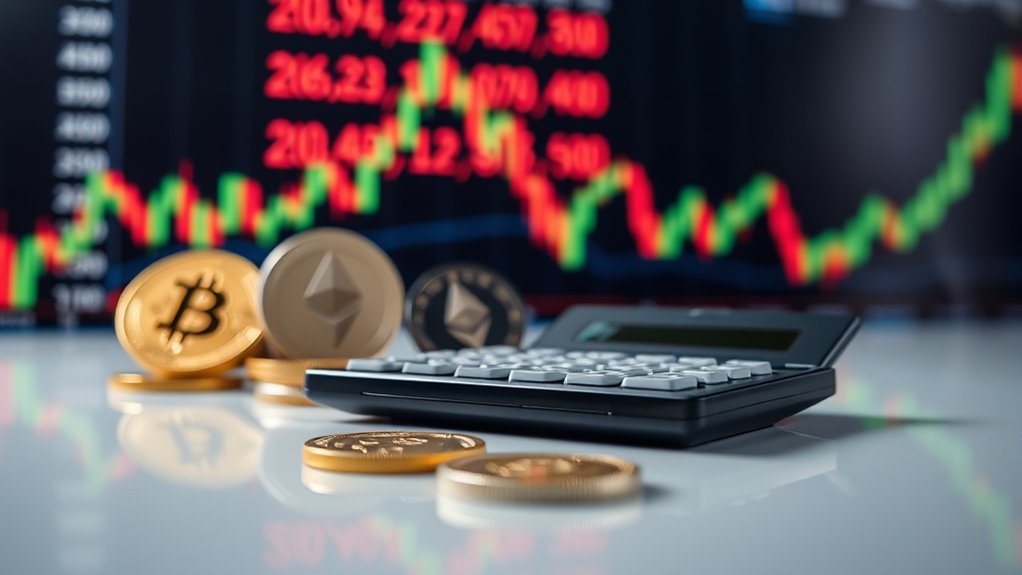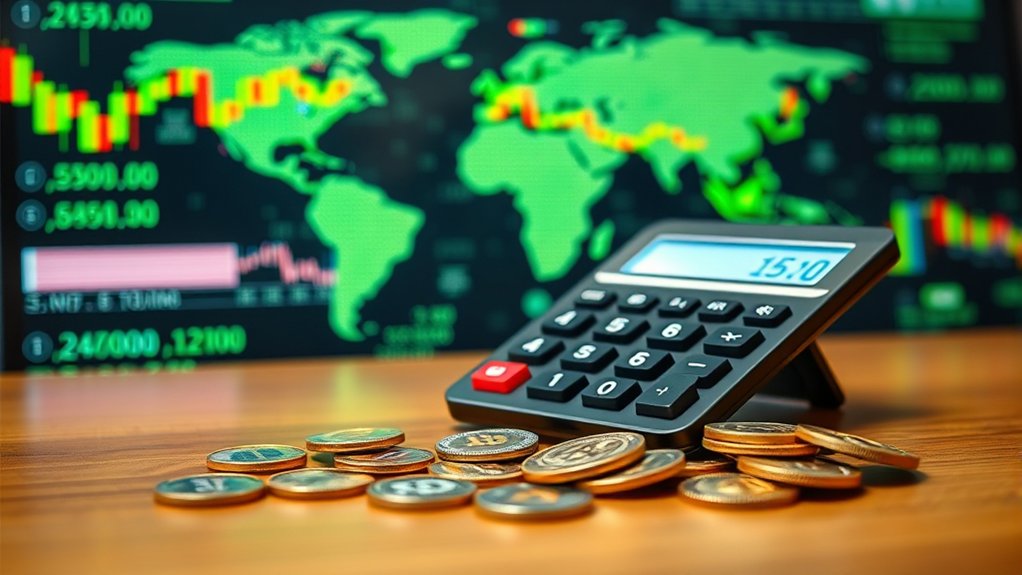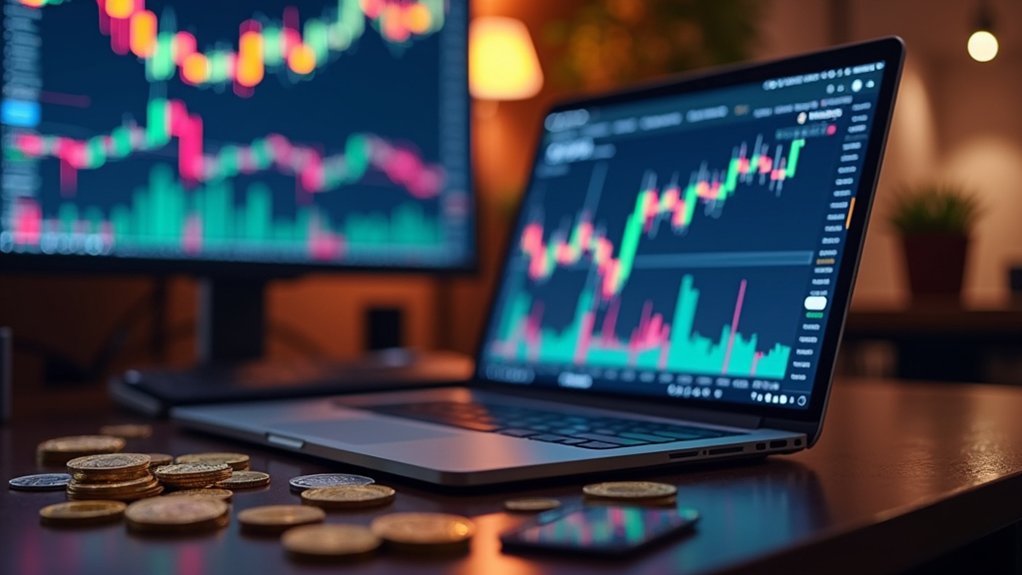Market capitalization for cryptocurrencies? Simple math, really. Just take the current price of a token and multiply it by the circulating supply. Voila! You’ve got your market cap. But wait, it’s not just about that number. The circulating supply matters too. It excludes those tokens locked away or held by founders. Prices can swing wildly, making it an emotional rollercoaster. Curious about all the factors that play into these numbers? Stick around for a deeper look.

Market capitalization—it’s the buzzword that keeps popping up in conversations about cryptocurrencies. But what does it really mean? Simply put, market cap is a fancy way of saying, “This is how much a cryptocurrency is worth.” It’s calculated by multiplying the current price per token by the circulating supply. So, if you think about it, the total value of a cryptocurrency is really just a math problem. Easy peasy, right? Not so fast!
Circulating supply is significant here. It refers to the number of coins that are actually out there, available for trading. You can forget about those tokens that are locked away in smart contracts or stashed by project founders. They don’t count. This means that if circulating supply changes, so does the market cap. It’s like the stock market, but with way more chaos. Market cap can also be calculated in other currencies, such as Euro. Understanding the total value of circulating supply is crucial for accurate market cap calculations.
And let’s talk about price—the current price per token is a big deal. Prices can swing like a pendulum, and that makes market cap jump around too. One minute a coin could be soaring, the next it’s in free fall. Talk about emotional rollercoasters! The price reflects what people are willing to pay, which is often influenced by market demand and supply.
Now, cryptocurrencies are categorized into large-cap, mid-cap, and small-cap based on their market cap. Large-cap coins are the big boys—stable and established. Mid-cap coins are like the middle children—sometimes overlooked but full of potential. Small-cap coins? Well, they’re the wild cards. High risk, high reward.
Market cap is a key metric for investors; it helps gauge stability and growth potential. But it’s not the whole picture. It’s important to take into account other factors too, like tech advancements and community support. Market cap gives a snapshot, but it’s not the full story.
Frequently Asked Questions
What Is the Significance of Market Cap for Investors?
Market cap is a big deal for investors. It shows how popular a cryptocurrency is. Think of it as a popularity contest, but with money.
Higher market caps often mean stability—nobody wants a rollercoaster ride with their cash. Smaller caps? They might skyrocket, but they’re risky.
Investors use market cap to size up potential gains and losses. So, yeah, it’s pretty important for deciding where to throw down some bucks.
How Does Market Cap Affect Cryptocurrency Prices?
Market cap and cryptocurrency prices are like dance partners—one leads, and the other follows.
When demand spikes, market cap jumps, often sending prices soaring. Conversely, a dip in market cap? Expect prices to tumble too.
Investors keep a close eye on this dynamic; it’s a wild ride. Higher market cap usually means stability, but don’t be fooled.
Even the big players can crash. It’s all part of the crypto circus. Buckle up!
Can Market Cap Change Rapidly?
Market cap can change faster than a teenager’s mood. One moment it’s soaring, the next, it’s crashing.
Price swings happen in the blink of an eye, often stirred by rumors or market sentiment. High trading volumes? Yep, they can send prices—and market caps—on a rollercoaster ride.
Investor behavior adds fuel to the fire, making it all feel chaotic. So, buckle up; rapid changes are just the nature of the crypto beast.
What Are the Limitations of Using Market Cap?
Market cap? Sure, it’s a popular buzzword in crypto circles.
But let’s be real—it’s not the holy grail. It’s oversimplified. It doesn’t account for volatility. And good luck finding reliable data; it’s often a mess.
Plus, newer coins? They can be a wild ride.
So yes, while market cap can guide decisions, it’s like using a map without a compass. Not exactly foolproof.
Investors, beware!
How Does Market Cap Compare to Trading Volume?
Market cap and trading volume? They’re like apples and oranges, folks.
Market cap shows a cryptocurrency’s size, its total value. Bigger number, bigger ego.
Trading volume? It’s all about action. How frequently are those coins changing hands? High volume means liquidity; low? Good luck getting out without a loss.
So, while market cap might look impressive, trading volume reveals the real story.
One tells you about size; the other, about movement. Simple, right?





